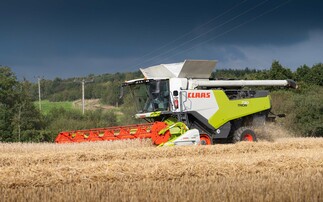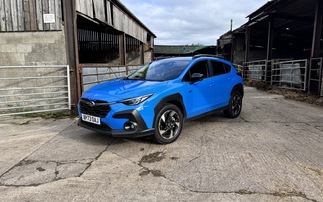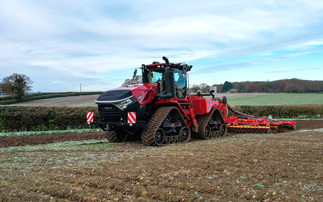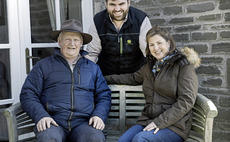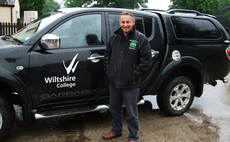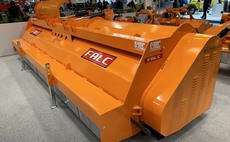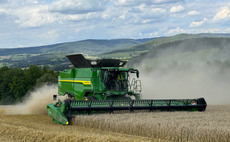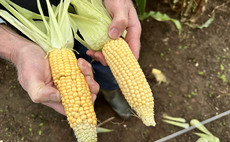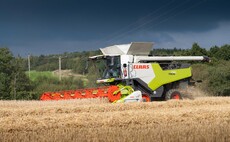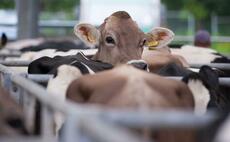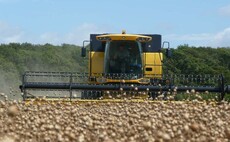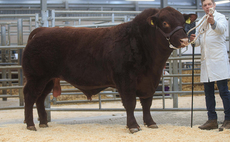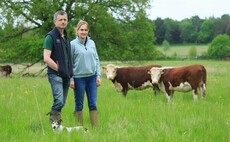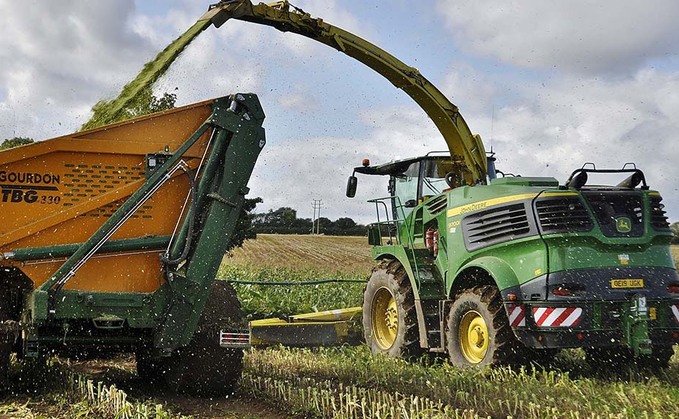
For Brinklow Biogas, the purchase of its latest forager has improved the efficiency of its maize harvesting campaign while also inspiring the business to explore new techniques for harvesting maize. Simon Henley reports.
The Aston brothers are progressive farmers who have expanded their farming operation in recent years, focusing entirely on the production of renewable energy.
But that is not all, because this is a company which closely monitors the energy requirements of its farming practices, specifically to control the carbon footprint of the business.
Brinklow Biogas is located on the outskirts of Coventry, Warwickshire. Operated by brothers Dale and Mark Aston, the company grows 1,325 hectares of fodder and root crops specifically to fuel its 3.5MW anaerobic digestion plant.
Wholecrop
Keeping the plant running requires harvesting more than 800ha of maize, 400ha of wholecrop and grass, and 100ha of fodder beet, which in a season like autumn last year, was not a task for the faint-hearted.
Last year, the company extended its harvesting fleet with the purchase of a John Deere 9700i self-propelled forage harvester.
In previous years, the Aston brothers have relied on a local contracting firm for forage harvesting work.
However, the quest to maintain greater control of its harvesting schedule ultimately inspired the brothers' decision to invest in a high-capacity forage harvester.
Dale explains: "From the outset we were keen to find both the best deal we could get and to determine which forage harvester would give us the consistent chopping quality we require for the AD plant.
"We organised demonstrations with several manufacturers including Fendt and Krone.
The Fendt Katana 85 proved to be a relaxed performer, but the maize header required more of the engine's power than either the Krone Big X770 or John Deere 9700i.
"I really liked the Krone Big X," adds Dale.
"It compared well to the John Deere in terms of output and chop quality, however, when push came to shove, it was having a John Deere dealer right on our doorstep which steered us towards buying the 9700i.
"The local John Deere dealer, Farol's at Hinckley, is just a few miles away.
The combination of the John Deere three year 1,500-hour warranty and a 0 per cent purchasing package through John Deere Finance is what swayed the deal.
Additionally, we were very specific about the machine we wanted and Farol's salesman Chris Harding bent over backwards to get us the specification we required."
As part of the purchase agreement, Brinklow Biogas specified its new John Deere with optional extras which included the manufacturer's Xtreme KP kernel processor and the Dura Line protection Package.
Liners
The latter includes hard-wearing crop liners which protect the intake neck, drum hangers, shear bars, blower and blower chute and the spout, along with a 3,000-hour/ five-year warranty.
"The average chop length we require is 6mm so we opted for a 64-knife drum configuration," reveals Dale.
"One of the things which impressed me with the 9700 is the orientation of the knives, which are arranged in an offset chevron pattern.
"The design and layout of the knife holders allows the knives to take small bites of the crop as it passes through the cutter head, which produces a more consistent chop length and creates a more even crop flow.
"We also like the header attachment system, which features a single lever locking mechanism and connects the driveline automatically.
"More importantly, we found the John Deere feed roller housing was the easiest and quickest to open in the field.
It literally swings open like a door, providing easy access to the drum and feed rollers."
With their harvester chopping maize and wholecrop for biogas production, the Aston brothers decided to buy two kernel processors, since the manufacturer offers both the Premium KP and the Extreme KP with its 9000 Series harvesters.
Premium KP rollers combine 178 ‘Xcut' teeth with a 32 per cent speed differential between them.
This is said to be ideal for producing wholecrop or grain silage.
However, maize frequently requires a more aggressive processor with a higher tearing action, particularly in UK harvesting conditions.
The heavy-duty John Deere Xtreme KP uses larger, 250mm rollers mounted on 30 per cent bigger bearings, which are temperature monitored to extend their service life.
To provide the necessary tearing action, the Xtreme KP features ‘saw' teeth rollers with a 50 per cent speed differential, resulting in consistently mashed kernels and highly processed foliage, whatever the chop length.
Dale says: "We found the Premium KP handles grain perfectly.
But it can be prone to blocking-up in maize.
Since chopping quality is imperative for what we are doing, we opted to also buy the Xtreme KP, which can be interchanged without too much fuss when you change crops.
"We direct-cut wholecrop and grain crops using the John Deere/ Kemper 12-row maize header.
This has proved to be a highly effective method, without the additional investment of buying a wholecrop header.
I have been told that after a few seasons when the maize header starts to show some wear it will not be quite as effective, but we will worry about that when it happens."
The purchase of two Gourdon TBG 330 lateral-tip chaser bins was another deliberate decision by Dale, inspired by a contingency plan to reduce the volume of tractors and trailers travelling on the road.
"Our primary consideration was to find a cost-effective method of transferring harvested material in-field, directly into trucks or clean tractors and trailers.
This was orchestrated to reduce the risk of bringing dirt onto the highway and also to improve the efficiency of transporting the crop between the field and the clamp.
Performance
Challenging weather conditions can make the maize harvest difficult, particularly last year, and we would have literally been stuck without the Gourdon bins.
We have used them behind Case IH Quadtracs, which has enabled us to keep travelling where virtually every other tractor and trailer on-farm has been getting set and making ruts."
From the driver's perspective, Brinklow Biogas' operator Adam Parry gives the John Deere 9700i a big thumbs up, citing the cab as being both spacious and quiet with controls which are intuitively placed.
In terms of performance, the 24.2-litre, V12, Liebherr-powered (770hp) harvester is described as almost unstoppable, with tonnes of power in reserve.
Fuel consumption is reported as being less than expected, in part thanks to the engine's lowrevving design and the harvester's ProDrive transmission.
Tractive performance is noted as being very good, thanks to the 9700's hydro-mechanical four-wheel drive steering axle and its diff-locking front axle, which is equipped with 710/70 R42 front tyres.
Mr Parry also praises the forager's Active Fill automatic spout control system, which has made filling trailers just that bit easier in difficult conditions, leaving the driver to focus on keeping the harvester moving.
"Buying a forage harvester has both increased the workload and the responsibility we have for harvesting.
But it has given us greater flexibility and more control over the harvesting process," Dale says.
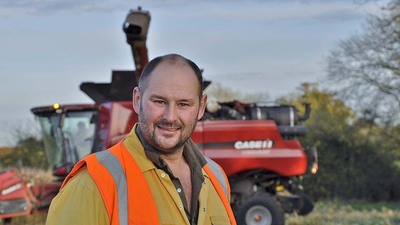
According to Dale, the addition of the Kooima adaptor plate lengthens the intake throat in front of the feed rollers, necessitating the requirement for a driven paddle rotor inside the adaptor to transfer the crop from the header onto the feed rollers.
Modified
The harvester's chopping mechanism has also been modified with a recutter floor, which features a bank of knives which chop the crop a second time as it passes through to the kernel processor, eliminating any long lengths of leaf or stalk.
"The benefit of using this type of header on the forage harvester is the harvested cobs/kernels are chopped in the drum and KP to make a meal, which can blown from the chute into the chaser bin, transferred into lorries and taken directly for clamping.
"Because it grinds the whole ear as opposed to threshing out the maize kernels, the forager has eliminated the requirement for milling/ crimping the kernels pre-clamping.
With combine-harvested kernels, they must be bruised by running them through a milling machine before they can be clamped.
"There are other advantages too," says Dale.
"Primarily, the meal produced by GEM harvesting is significantly more potent than standard maize silage, with a fraction of the volume of material to haul and handle.
"We have also discovered the stripped stalk and leaf trash offers an advantage when travelling in the field, as we did not seem to pick up as much mud on the wheels.
Ultimately, the key benefit is there is no effluent produced, and practically no clamp losses either, thanks to the high dry matter of the product."
Forager Specifications:
- Model: John Deere 9700i
- Engine: 24.2-litre, V12, Liebherr
- Power: 770hp at 1,800rpm
- Transmission: Two-speed, ProDrive
- Cutter head (chopping cylinder): 850mm wide by 650mm in diameter
- Length of chop: 64-knife offering three to 16mm in 1mm steps
- Number of feed rollers: Four
Business facts:
Company: Brinklow Biogas
Location: Brinklow, Warwickshire
Farmed area: 1,325 hectares
Cropping: Fodder and root crops for biogas
Have a look at John Deere's manufacturer account

Since our founding in 1837, John Deere has delivered products and services to support those linked to the land. Read about our past, what we learn from it, and how we use it to improve every day.










